Supercharger for Jeep JK – Ultimate Guide
The 2007-11 Jeep Wrangler is underpowered, with only 205 horsepower. When you consider that it’s the same weight as a modern day ¾ or 1-ton truck with a V-6 engine, you can see that the power output isn’t really enough to move it more than around town.
There are two primary ways to enhance engine performance, turbocharging and supercharging. Both are forced induction methods that share the common purpose of boosting horsepower in normally aspirated engines. Although they are sometimes mistold or used interchangeably, the two technologies have distinct differences.
Click here to skip to our recommended pick!
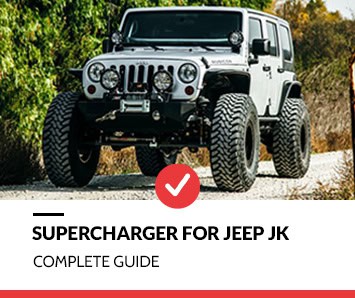
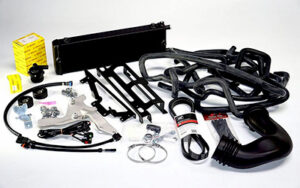
- Value for money: 🔥🔥🔥🔥🔥
- Purchase link: Buy your Sprintex Black Standard Supercharger system at Amazon!
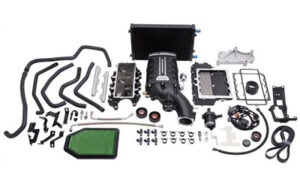
- Value for money: 🔥🔥🔥🔥
- Purchase link: Buy your Edelbrock E-Force Supercharger Kit Jeep Wrangler 15-17 3.6L at Amazon!
Sprintex Black Standard Supercharger system
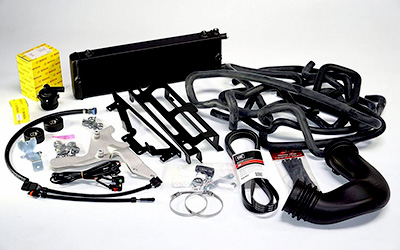
What is a Supercharger?
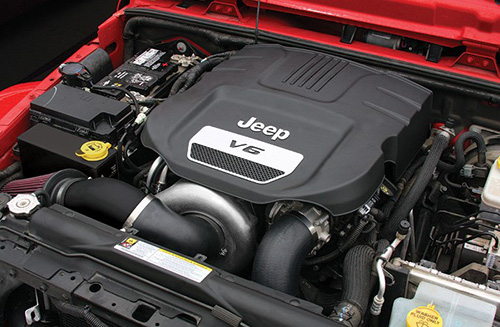
Electric stations that provide power to charge vehicles are called Superchargers. They can be built above or below ground and they use electricity generated at night to store the energy in batteries, which is then used during periods of high demand.
A supercharger’s main function is to provide the engine with a larger volume of air and thus increase the amount of power it can produce. More power is produced by burning more fuel during combustion for larger explosions in the combustion chambers. In order to burn more fuel, the engine needs an increased intake of oxygen during its process of combustion. Superchargers are engines that compress air and send it to the engine. When a valve opens, intake is increased and allows for more fuel to be provided. Superchargers are very efficient because they rely on the engine’s own power to function.
Benefits of a Jeep supercharger:
- A supercharger is attached to the engine and provides instantaneous power. The boost in low RPMs comes with great relief.
- Superchargers are generally reliable and inexpensive because of their design.
- A supercharger does not need oil changes ever, so there’s no need for maintenance.
- When a turbocharger isn’t enough, some engine parts are beefed up for more power.
- A quick solution for people with larger displacement engines and more cylinders..
- Turbocharging can cause lag in engine power delivery, while superchargers provide instantaneous power.
- Delivers power boost at low engine revs in comparison with turbochargers.
- Throttling up your vehicle is not the only way to increase engine performance-although it is a really popular one. For instance, reducing heat through vents and increasing the air intake will also create more horsepower.
Negatives of a supercharger:
- Superchargers are capable of producing a large amount of heat, which can in turn impact performance.
- The gas engine is the power source for the supercharger, and it will be under some additional tension due to this relationship.
- Increasing the height of an engine will change how a car handles.
- The absence of a wastegate leads to more carbon emissions.
- Increased fuel consumption due of engine-driven air conditioner and heater
- Turbocharging can be more abrasive or louder than engines that are not turbocharged.
Types of Supercharger

It was clear from the beginning of development that turbochargers could be difficult to package in existing installations. Centrifugal superchargers are available and can easily improve performance with relatively little expense, but they require a belt drive system and so Paxton Industries developed their own design which they sell under the Vortec name. One exercise of this design is an adjustable-ratio centrifugal supercharger which, using a continuous variable pulley drive connected to a conventional compressor, favors longer and lower packaging. Generally, factory superchargers are enclosed in the valley of V-type engines and so favor shorter or wider packaging options. Of these, the Roots type is most popular among factory cars that have been supercharged. The early-2000s vintage Ford GT and the Mazda Millenia’s Miller-cycle engine are two examples of a car with this style of turbocharger.
There are a few supercharger designs that have been used in the past, some more popular than others. The G-Lander type scroll type of supercharger was favored by Volkswagen for a while, but it offers a lot of friction and is not very common nowadays. Another design you may see is the sliding vane type which hasn’t seen much use since the 1930s when Powerplus superchargers were introduced on some MG cars. Finally, there’s pressure wave types, known as Complex systems. It features a spinning cylinder divided into numerous chambers open at both ends. One end is exposed to the exhaust stream, then one side is exposed to the intake. Exhaust pulses push intake air toward the intake side before the tube is sealed again, and reflect back on its way to the opposite side of the intake and exhaust tube. There are some commingling of gasses, so it works well at low engine speeds for diesels only.
Edelbrock E-Force Supercharger Kit Jeep Wrangler 15-17 3.6L
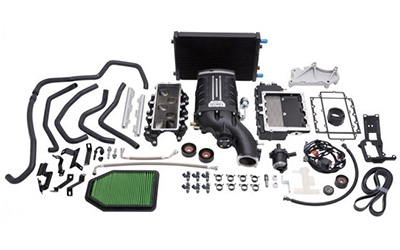
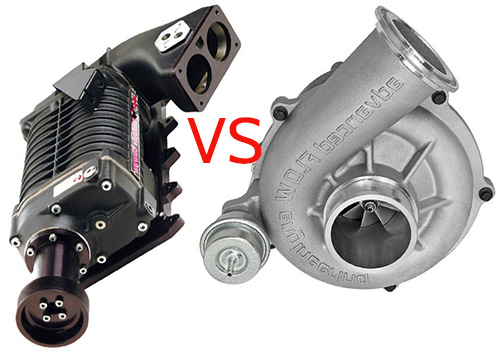
Difference Between a Turbocharger and a Supercharger
Turbochargers and superchargers are two different methods for improving the performance of a vehicle. Though both serve the same general function, they differ in terms of how they are used by passenger vehicles.
Both forced induction systems fall into the category of technologies that enable vehicles to produce more power than a similar ‘normally aspirated’ engine. The technology is achieved by compressing the density of air before it’s ignited within an engine’s cylinders, which creates a lot of boost and can provide up to 50% more power into the engine.
While both superchargers and turbos use air compression to enhance engine performance, they differ in one key way: how they obtain their power. While a turbo gets much of its energy from the engine’s exhaust gases, a supercharger is driven by an external device like a belt or shaft connected to the crankshaft.
People are always asking us about how to improve their engine performance. To get into the details of each, we’re not going to do it here, but hopefully this information will help you make a decision on what work your car needs done by examining both options and seeing which one fits best.
Essentially, a turbocharger sits off of your exhaust manifold. The pressure the turbine creates spins and makes the compressor spin as well. This air pressurizes the intake system, creating a boost. A supercharger does not work off of exhaust gas; instead, it is attached to the engine and spins with the crankshaft. When the crankshaft moves or turns, a supercharger forces air into your motor. The turbo lays under the engine in a car and requires no power to turn it on. For this reason it is more efficient and makes more torque per boost of air than an aspirated engine. A supercharger is less effective when the engine is spinning at redline because it cannot physically spin any faster.
Benefits of a Supercharger On and Off-Road
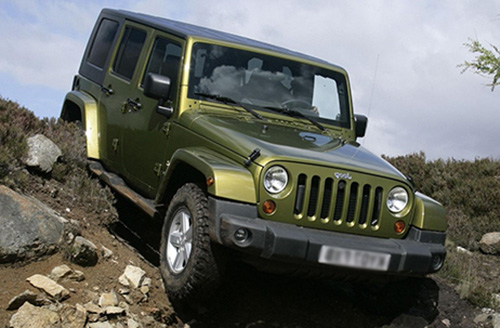
Supercharging a vehicle is one way to increase horsepower. For example, it would allow a regular coupe or truck to have the power of a larger engine.
Modern Superchargers, used in many new U.S. cars and most of Tesla’s vehicles, don’t have the same lag that makes driving feel sluggish and off-putting when you step on the gas pedal in a Turbocharged car. Superchargers have a virtually zero lag time because they are powered directly by the cranking shaft. They may be more efficient at different speeds and so understanding where your engine will perform best is important to ensure you buy what’s right for your needs.Centrifugal superchargers, which provide more power as they speed up, are efficient in the higher RPM range.
Installing a turbocharger requires significant modification of the exhaust system; but, unlike a supercharger which can be easily bolted onto an engine, installing one with pistons is much more complex.For decades, turbocharged cars would have to idle for about 30 seconds before being shut down so that they could cool properly. But modern turbos now have systems that do this for you, so the engine can be treated like a regular engine or a super-charged one. With that in mind, it is important to warm up the car first if it has been idling and its cold, as a supercharger works most efficiently at normal temperatures.
Superchargers are a common upgrade for the internal combustion engines of airplanes. When you consider that most aircraft spend their time at high altitudes, where oxygen is limited, it only makes sense to minimize engine performance loss with superchargers.
International air travel can be daunting and with kids in tow, it becomes even more difficult. Superchargers for aircraft engines work similarly to those found in cars. They draw power directly from the engine and use a compressor to blow pressurized air into the combustion chamber. The illustration shows how this is done on an airplane installation, with its basic arrangement depicted above.
Supercharger Disadvantages
Next, we’ll talk about the disadvantages of superchargers.
The biggest disadvantage of Superchargers is also the defining characteristic: they steal horsepower from the engine. However, because superchargers can generate as much as 46% additional power, most people think this trade-off is worth it.
Supercharging an engine requires aggressive modifications in order to help maintain the integrity of the use. Most car manufacturers account for this by incorporating high-grade components when building engines that will likely see higher levels of supercharger usage.
Some disadvantages come with superchargers, but they are still an effective way to increase the power of your car.
The 2007-11 Jeep Wrangler is underpowered, with only 205 horsepower. When you consider that it’s the same weight as a modern day ¾ or 1-ton truck with a V-6 engine, you can see that the power output isn’t really enough to move it more than around town. Today we will look at Supercharger for Jeep JK!
There are two primary ways to enhance engine performance, turbocharging and supercharging. Both are forced induction methods that share the common purpose of boosting horsepower in normally aspirated engines. Although they are sometimes mistold or used interchangeably, the two technologies have distinct differences.
Click here to skip to our recommended pick!


- Value for money: 🔥🔥🔥🔥🔥
- Purchase link: Buy your Sprintex Black Standard Supercharger system at Amazon!

- Value for money: 🔥🔥🔥🔥
- Purchase link: Buy your Edelbrock E-Force Supercharger Kit Jeep Wrangler 15-17 3.6L at Amazon!
Sprintex Black Standard Supercharger system
What is a Supercharger?

Electric stations that provide power to charge vehicles are called Superchargers. They can be built above or below ground and they use electricity generated at night to store the energy in batteries, which is then used during periods of high demand.
A supercharger’s main function is to provide the engine with a larger volume of air and thus increase the amount of power it can produce. More power is produced by burning more fuel during combustion for larger explosions in the combustion chambers. In order to burn more fuel, the engine needs an increased intake of oxygen during its process of combustion. Superchargers are engines that compress air and send it to the engine. When a valve opens, intake is increased and allows for more fuel to be provided. Superchargers are very efficient because they rely on the engine’s own power to function.
Benefits of Supercharger for Jeep JK:
- A supercharger is attached to the engine and provides instantaneous power. The boost in low RPMs comes with great relief.
- Superchargers are generally reliable and inexpensive because of their design.
- A supercharger does not need oil changes ever, so there’s no need for maintenance.
- When a turbocharger isn’t enough, some engine parts are beefed up for more power.
- A quick solution for people with larger displacement engines and more cylinders..
- Turbocharging can cause lag in engine power delivery, while superchargers provide instantaneous power.
- Delivers power boost at low engine revs in comparison with turbochargers.
- Throttling up your vehicle is not the only way to increase engine performance-although it is a really popular one. For instance, reducing heat through vents and increasing the air intake will also create more horsepower.
Negatives of a supercharger:
- Superchargers are capable of producing a large amount of heat, which can in turn impact performance.
- The gas engine is the power source for the supercharger, and it will be under some additional tension due to this relationship.
- Increasing the height of an engine will change how a car handles.
- The absence of a wastegate leads to more carbon emissions.
- Increased fuel consumption due of engine-driven air conditioner and heater
- Turbocharging can be more abrasive or louder than engines that are not turbocharged.
Types of Supercharger

It was clear from the beginning of development that turbochargers could be difficult to package in existing installations. Centrifugal superchargers are available and can easily improve performance with relatively little expense, but they require a belt drive system and so Paxton Industries developed their own design which they sell under the Vortec name. One exercise of this design is an adjustable-ratio centrifugal supercharger which, using a continuous variable pulley drive connected to a conventional compressor, favors longer and lower packaging. Generally, factory superchargers are enclosed in the valley of V-type engines and so favor shorter or wider packaging options. Of these, the Roots type is most popular among factory cars that have been supercharged. The early-2000s vintage Ford GT and the Mazda Millenia’s Miller-cycle engine are two examples of a car with this style of turbocharger.
There are a few supercharger designs that have been used in the past, some more popular than others. The G-Lander type scroll type of supercharger was favored by Volkswagen for a while, but it offers a lot of friction and is not very common nowadays. Another design you may see is the sliding vane type which hasn’t seen much use since the 1930s when Powerplus superchargers were introduced on some MG cars. Finally, there’s pressure wave types, known as Complex systems. It features a spinning cylinder divided into numerous chambers open at both ends. One end is exposed to the exhaust stream, then one side is exposed to the intake. Exhaust pulses push intake air toward the intake side before the tube is sealed again, and reflect back on its way to the opposite side of the intake and exhaust tube. There are some commingling of gasses, so it works well at low engine speeds for diesels only.
Edelbrock E-Force Supercharger Kit Jeep Wrangler 15-17 3.6L

Difference Between a Turbocharger and a Supercharger
Turbochargers and superchargers are two different methods for improving the performance of a vehicle. Though both serve the same general function, they differ in terms of how they are used by passenger vehicles.
Both forced induction systems fall into the category of technologies that enable vehicles to produce more power than a similar ‘normally aspirated’ engine. The technology is achieved by compressing the density of air before it’s ignited within an engine’s cylinders, which creates a lot of boost and can provide up to 50% more power into the engine.
While both superchargers and turbos use air compression to enhance engine performance, they differ in one key way: how they obtain their power. While a turbo gets much of its energy from the engine’s exhaust gases, a supercharger is driven by an external device like a belt or shaft connected to the crankshaft.
People are always asking us about how to improve their engine performance. To get into the details of each, we’re not going to do it here, but hopefully, this information will help you make a decision on what work your car needs done by examining both options and seeing which one fits best.
Essentially, a turbocharger sits off of your exhaust manifold. The pressure the turbine creates spins and makes the compressor spin as well. This air pressurizes the intake system, creating a boost. A supercharger does not work off of exhaust gas; instead, it is attached to the engine and spins with the crankshaft. When the crankshaft moves or turns, a supercharger forces air into your motor. The turbo lays under the engine in a car and requires no power to turn it on. For this reason it is more efficient and makes more torque per boost of air than an aspirated engine. A supercharger is less effective when the engine is spinning at redline because it cannot physically spin any faster.
Benefits of a Supercharger On and Off-Road

Supercharging a vehicle is one way to increase horsepower. For example, it would allow a regular coupe or truck to have the power of a larger engine.
Modern Superchargers, used in many new U.S. cars and most of Tesla’s vehicles, don’t have the same lag that makes driving feel sluggish and off-putting when you step on the gas pedal in a Turbocharged car. Superchargers have virtually zero lag time because they are powered directly by the cranking shaft. They may be more efficient at different speeds so understanding where your engine will perform best is important to ensure you buy what’s right for your needs. Centrifugal superchargers, which provide more power as they speed up, are efficient in the higher RPM range.
Installing a turbocharger requires significant modification of the exhaust system; but, unlike a supercharger which can be easily bolted onto an engine, installing one with pistons is much more complex. For decades, turbocharged cars would have to idle for about 30 seconds before being shut down so that they could cool properly. But modern turbos now have systems that do this for you, so the engine can be treated like a regular engine or a super-charged one. With that in mind, it is important to warm up the car first if it has been idling and its cold, as a supercharger works most efficiently at normal temperatures.
Superchargers are a common upgrade for the internal combustion engines of airplanes. When you consider that most aircraft spend their time at high altitudes, where oxygen is limited, it only makes sense to minimize engine performance loss with superchargers.
International air travel can be daunting and with kids in tow, it becomes even more difficult. Superchargers for aircraft engines work similarly to those found in cars. They draw power directly from the engine and use a compressor to blow pressurized air into the combustion chamber. The illustration shows how this is done on an airplane installation, with its basic arrangement depicted above.
Supercharger for Jeep JK Disadvantages
Next, we’ll talk about the disadvantages of superchargers.
The biggest disadvantage of Superchargers is also the defining characteristic: they steal horsepower from the engine. However, because superchargers can generate as much as 46% additional power, most people think this trade-off is worth it.
Supercharging an engine requires aggressive modifications in order to help maintain the integrity of the use. Most car manufacturers account for this by incorporating high-grade components when building engines that will likely see higher levels of supercharger usage.
Some disadvantages come with superchargers, but they are still an effective way to increase the power of your car.
What type of Fuel is Needed to Run a Supercharger for Jeep JK?
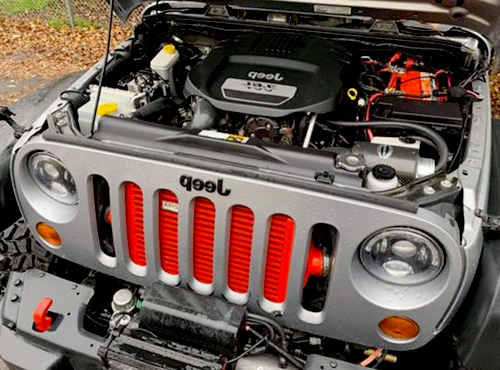
Fuel type, whether or not the engine is fuel-injected, and if it has a supercharger are all factors that determine what type of fuel is needed. Intercooled ProCharger EFI/TPI, applications with a compression ratio less than 9.5:1 can safely run boost levels of 14-17 psi on pump gas and will produce horsepower gains anywhere from 75-100% (depending on the boost level).
If your car has 9.5:1 EFI/TPI with no intercooler, increasing the boost level to more than 5 psi (if using pump gas) will require timing retardations and result in peaks of 35-45% hp gains. Cars with lower compression ratios should have higher levels of boost but cars with high compression ratios should run less when all other factors are taken into account, Supercharger for Jeep JK. All street-oriented ProCharger systems are designed to work with pump gas without affecting your car’s daily driveability.
Different rules apply for carbureted motors, though. Carburetors deliver the majority of fuel in liquid form and as this raw fuel gets atomized from liquid to gas, a chemical state change actually occurs. While a carbureted engine is capable of higher boost than an EFI/TPI engine without the danger of detonation, there are limits to what it can handle safely. The compression ratio affects how much horsepower and torque this type of engine will produce. Gasoline that’s been pumped with a high octane level is more likely to ensure safety when using greater throttle input which in turn produces stronger performance of Supercharger for Jeep JK.
Summary about Supercharger for Jeep JK

Turbocharging and supercharging each offer trade-offs, but both systems can give you more power. Turbocharging is a better solution if the two most important features for you are fuel efficiency and increased performance. Supercharged engines do not typically have as many environmental concerns as turbocharged ones due to their ability to run on a lower octane gas station gasoline blend.
International travel can be a daunting task for anyone, but it is especially challenging when you have small children in tow. There are some drawbacks to consider as well. For example, it can increase your engine’s output consumption and make the engine work harder.

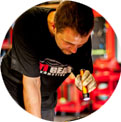
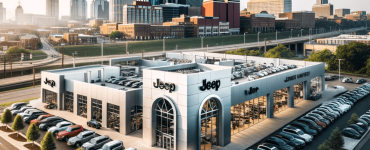
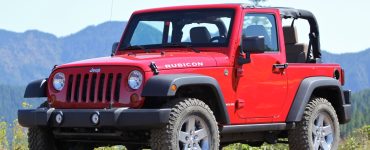
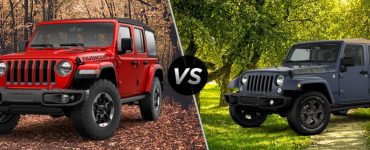
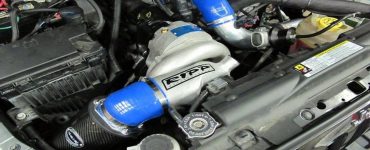
[…] Check out our articles on Jeep Wrangler Horsepower Upgrades: Best Jeep JK Performance Upgrades and Supercharger for Jeep JK – Ultimate Guide for more information on upgrading your Jeep’s […]
[…] consider exploring how the basics of turbocharging can boost engine performance, or delve into the ultimate guide to superchargers for a specific model for a more tailored […]